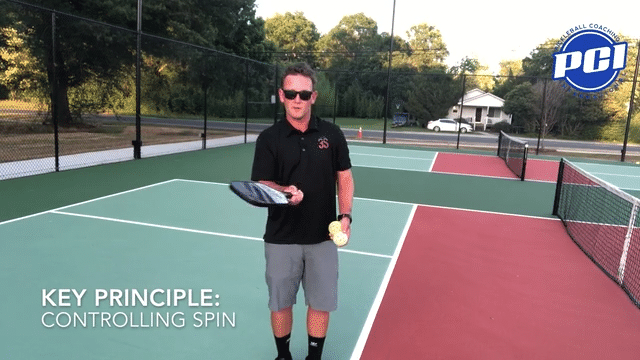This is the second in a series of articles where we respond to advice that our followers shared with us.
“Have Patience and Composure”
I think this is probably great advice both on and off the Pickleball court. Question is, how do you do it?
To answer this question, perhaps we should look at the opposite situation: being impatient. Being without composure. How does that happen?
When people are impatient, it is typically because they are over excited. Like a kid who can’t wait to get to the playground or shoppers on Black Friday, people who play an impatient pickleball game usually have very high levels of arousal. This can result in making poor choices about when to speed up the ball or in taking unnecessary risks for highlight real shots.
In many cases, impatience on the Pickleball court is the result of a lack of confidence. If you are in a cross court dinking rally, for example, but you don’t believe you cannot outlast your opponent, you are more likely to make an impatient shot and speed up the ball. It’s much easier to be patient when you know you have the skills to do it.
Often, the impatient person doesn’t realize they are impatient. In the heat of the moment, they think they are making a perfectly smart decision. This is where some video analysis can be helpful. Try recording yourself playing a competitive match. Take a look at the decision-making. Take a look at how long you were willing to stay in a rally before trying something unnecessarily offensive. This kind of post-match reflection can very often lead to insights. Insights that you can bring to your next time you’re on the court. Being composed and being patient take discipline. And watching yourself play a match can be helpful to start to develop it.
“Bend Your Knees: The Lower, The Better”
I often hear people giving the advice that others should bend their knees. But I’m always curious about why. What is the rationale?
When it comes to sending the ball over the net, it is your paddle that hits the ball — not your knees. So why does bending supposedly help?
Sometimes I think what people mean by this is not really about bending knees, but by having an athletic look. When you look at most sports, players ready for action do not stand upright. Instead, they have a lower, athletic look, and yes, their knees are bent. They are ready to explode to the left or the right, up or back. They are ready for action. In my view, this has less to do with bending knees, and more to do with having the appropriate mindset. It is important that you expect to have to chase the ball.
But maybe this is not what they mean. Maybe it’s not about mindset but about technique. Let’s look at that for a minute.
Whenever you send a ball over the net, we can talk about the ball's: height, speed, spin, distance, and direction. And all of these things are directly controlled by the paddle’s speed, angle, and swing path. This is critical to understand if you want to be able to control the ball.
So what does bending one’s knees have to do with anything? Sometimes the problem is that the ball is low and that rather than getting down and close to the ball, a player reaches down with their paddle, stretching. From this position, it can be difficult to control the paddle angle, speed, and swing path. And if we have trouble controlling these, we have trouble controlling the ball.
By bending one’s legs and getting closer to the ball, the player may have more control since they’re not reaching so much. If they’re in a more balanced position, and closer to the ball, it is likely going to be easier to control the paddle. In this case, the player, bending their knees is really only doing so as it means to an end; to put them in a better position to hit and hopefully control the ball. So the advice to bend one’s knees bad advice? No. But it doesn’t tell the whole story. In fact, it tells very little of the story.
“If You Are a Coach, You Should Talk Less So Your Players Can Hit More”
This one I agree with 100%
Far too often I see coaches who are in love with their own voice. They spend three, four or even five minutes introducing a skill or a drill. This is wasteful.
Whether in a group or private lesson setting, coaches should be able to introduce a topic and why matters in 30 seconds or less. At Pickleball Coaching International, we even have a whole section on our website dedicated to introducing a topic in 15 seconds or less.
After introducing a topic, effective coaches should be able to demonstrate the skill in the drill less than 90 seconds. And then they should get it running right away. This is actually something that gets evaluated in the PCI instructor certification program.
Every moment the coach is yammering on is time that the players aren’t hitting balls. And while there are certainly times that require a deeper conversation, in most pickleball training sessions, there can be far more time spent actually training.
Again, some video analysis is helpful here. The coach can observe how much time they spend talking versus getting their players active.
Thank you for sharing these insightful tips! Join the discussion and stay updated by following us on Facebook and Instagram @thirdshotsports. We look forward to exploring more in the upcoming articles of this series.
Written by: Mark Renneson




